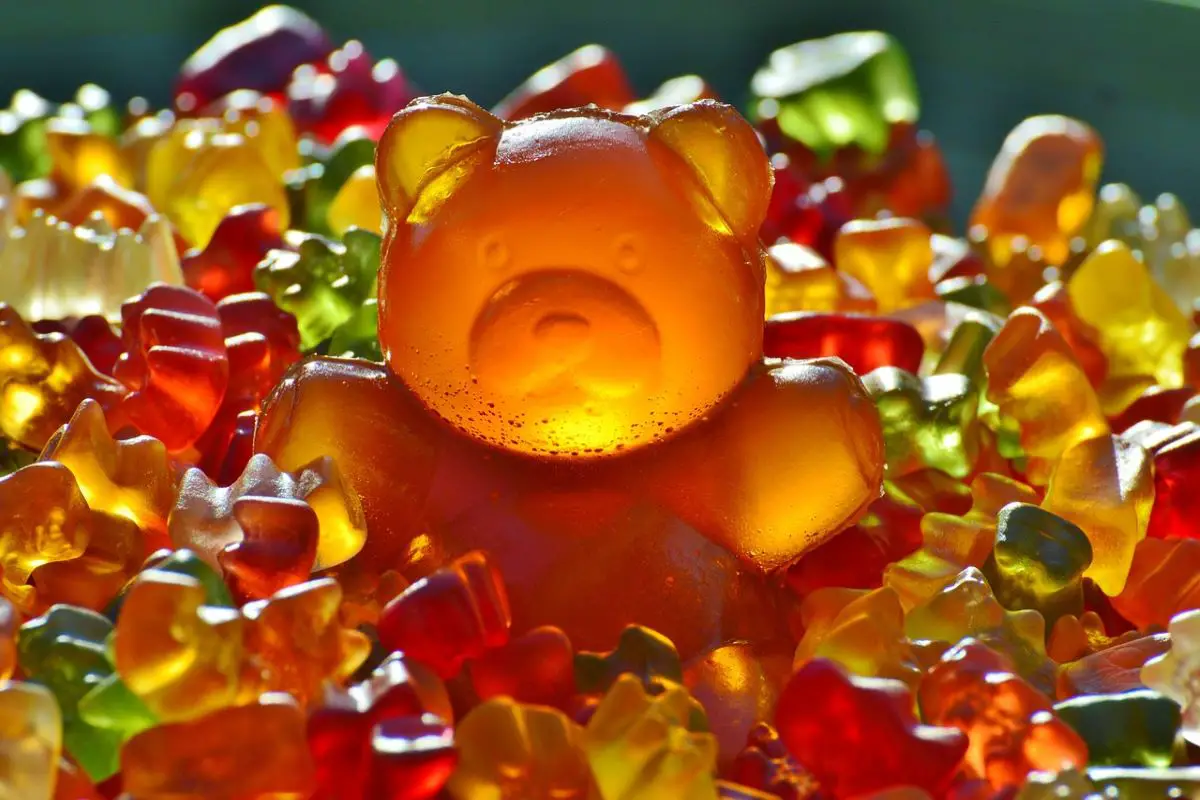It’s a silly thought. You see a cute package of gummi bear snacks and think, man, those look delicious. You buy two packages without even considering if they are bad for you or not. Today, we’re going to take the time to analyze these gummy bears.
Gummy bears, a nostalgic treat for kids and adults alike, are gelatin-based candy shaped into small bear molds. The first gummy bears were invented in Germany in 1922 by confectioner Hans Riegel. Gummy bears come in various flavors and colors, including raspberry, cherry, green apple, and orange.
Gummy bears may be cute, but they’re not that great for you. The sweet treat contains 4 grams of sugar per gummy bear. That’s like popping a piece of hard candy into your mouth. The problem? Gummy bears are chewy, and it takes a while to finish one. You may pop one in your mouth, chew for a bit and then forget about it until you feel something hard in your teeth hours later.
They also contain sugar alcohols, which come with their own set of side effects. Sugar alcohols are sweeter than sugar but don’t raise blood sugar levels as much as sugar. Excessive consumption of sugar alcohol can cause bloating, gas and diarrhea in some people.
Gummy bears also contain artificial colors and flavors and very little fiber or protein to help slow the release of sugars into your bloodstream.
While gummy bears aren’t necessarily bad for you, they’re not quite suitable for you either. Instead of chowing down on the chewy treats, try snacking on fresh fruit, vegetables with hummus or nuts instead.
What Are Gummy Bears Made Of?
Gummy bears are made from gelatin, which is essentially the connective tissue of animals. The gelatin is boiled down to a solid in the same way bone broth is. Gelatin is then mixed with sugar and flavorings to make gummy bears. It’s not a vegetarian product, as it contains animal products, but it’s pretty low-maintenance to produce as far as candy goes.
To make gummy bears, gelatin is first dissolved in water. Sugar and flavorings are added. The mixture is then poured into molds in the shape of bears and left to sit for a day or two.
What Happens If You Eat Too Many?
If you eat too many Gummy Bears, you may experience increased gas and bowel irritation. These are the same symptoms associated with a relatively minor condition that is called “Bezoar” (pronounced “bee-zor”), which occurs when a mass of digestive material forms in one’s stomach, including undigested food (or Gummy Bears). If you experience these symptoms after eating too many Gummy Bears, you should see a doctor.
However, the most common side effect of eating too many Gummy Bears is an upset stomach, which produces pain and discomfort. This happens because your body cannot correctly digest large amounts of sugar alcohol (the main ingredient in gummy bears) at once. The best way to avoid this outcome is to eat less than 20 gummy bears per day.
Are Gummy Bears Vegan?
Gummy Bears are not vegan. Gummy Bears are made of gelatin derived from animal by-products, making them an unsuitable choice for vegans and vegetarians.
However, while they are often marketed as being made of “gum arabic,” a substance derived from acacia trees, the German company Haribo, the creators of the Gummy Bear, admits that their products do contain gelatin.
Are Gummy Bears Bad For Weight Loss?
Gummy bears can be a part of a weight loss plan, so long as you use them in place of other snacks that are higher in calories. Also, keep in mind that gummy bears are not calorie-free food; they have about 30 calories per serving.
A one-ounce serving of gummy bears has about 140 calories, and the typical serving size is about 1/4 cup or 22 gummy bears. If you eat an entire cup of gummy bears, you’re adding 585 calories to your daily intake. That’s more than half the number of calories many women should consume per day (1,500) and almost 40% of the recommended daily intake for men (2,000).
If you want to lose weight, stick to one serving or less of gummy bears per day. You’ll satisfy your sweet tooth without overindulging in high-calorie foods. And if you want your snack to be even healthier? Opt for low-sugar versions like those made with stevia or monk fruit instead.
Can You Eat Gummy Bears Every Day?
You can, but you probably shouldn’t. That’s because gummy bears are made of gelatin, a protein made from boiling the skin, tendons, and ligaments of animals—including cows and pigs. There isn’t much nutritional value in gummy bears. And while eating one or two servings of gummy bears isn’t likely to harm your health, eating too many can cause problems like abdominal pain and diarrhea.
While these aren’t dangerous issues in the short term, there’s no reason to intentionally put yourself at risk for them, especially when plenty of candies don’t have these downsides.
Are Too Many For You?
The short answer to this question is yes, too many Gummy Bears are bad for you. Let’s start by looking at the nutrition facts label: a serving of Gummy Bears is 80 grams, which contains 240 calories. They have 0% protein, no fat, and no carbohydrates. And they have a lot of sugar—15 grams per serving.
How much sugar is too much? According to the American Heart Association recommendations on sugar consumption, an adult woman should eat 25 grams of sugar per day, and an adult man should eat 37.5 grams of sugar per day.
A serving of Gummy Bears has more than half an adult woman’s daily recommended limit for sugar; nearly one-third of an adult man’s daily recommended limit for sugar, yet it only provides 240 calories! This shows that Gummy Bears are not nutritionally dense food; they contain a ton of empty calories in the form of sugar.
Of course, there’s nothing wrong with eating one or two Gummy Bears… but beyond that? It might be time to consider some healthier options!
Conclusion
Health concerns aside, in all likelihood, the most severe threat that gummy bears pose to your health is simply the calories. Gummy bears are often marketed according to fun themes. This is a clever ploy that makes them more appealing to children and adults alike and serves to hide the fact that they are essentially sugar on a stick. It’s difficult enough getting children to stop eating junk food like this without adding additional guilt by way of potential health risks.
You May Like These Articles As Well:
 Being Human
Being Human





